|
 DICTIONARIES & GLOSSARIES DICTIONARIES & GLOSSARIES

 MUSEUMS & GALLERIES MUSEUMS & GALLERIES
Below museum sites were invaluable to me. See this site’s individual A-to-Z pages for specific credits.

 TEMPLES, SHRINES, PILGRIMAGES, FESTIVALS TEMPLES, SHRINES, PILGRIMAGES, FESTIVALS

 PHOTO GALLERIES OF TEMPLES, SHRINES, STATUES PHOTO GALLERIES OF TEMPLES, SHRINES, STATUES

 SCHOOLS, SECTS, & RELIGIOUS ORGANIZATIONS SCHOOLS, SECTS, & RELIGIOUS ORGANIZATIONS
Schools & Sects
Religious Organizations

 ACADEMIC FORUMS & SCHOLARLY SOCIETIES ACADEMIC FORUMS & SCHOLARLY SOCIETIES
- PMJS: Premodern Japanese Studies. PMJS is an interdisciplinary forum with over 600 members worldwide who do research on earlier periods of Japanese art, culture, history, religion, language and literature. PMJS’s main function is to facilitate serious scholarly discussion on topics related to premodern Japan.
- Nanzan Institute for Religion and Culture. Located in Nagoya, Japan. Its symposia, colloquia, research projects, and numerous publications -- including the semi-annual Japanese Journal of Religious Studies -- promote dialogue among scholars, religions, philosophies, and cultures East & West.
- H-Buddism. The Buddhist Scholars Information Network serves as a medium for the exchange of information regarding academic resources, new research projects, scholarly publications, university job listings, and so forth, for specialists in Buddhist Studies.
- Society for the Study of Japanese Religions. SSJR is an international association of approximately 200 scholars committed to the academic study of the religions of Japan and is affiliated with the Association of Asian Studies.
- NCC Center for Study of Japanese Religions. Based in Kyoto, NCC is a research arm of the National Christian Council in Japan (NCC-J).
- Religion Source - Journalist's Shortcut to 5,000 Scholars. A service of the American Academy of Religion, the world's largest association of religion scholars.
- Japan Art History Forum. Membership is open to anyone with a serious scholarly interest in the study of Japanese art history, including faculty and graduate students in art history and related fields, museum professionals, independent scholars, and serious collectors.

 OTHER ART TOPICS OTHER ART TOPICS
- Ghosts, Demons, & Oni
Japanese Ghosts by Tim Screech (Mangajin)
Japanese Ghosts by Dr. Gabi Greve
Vedic Cosmology and Hungry Ghosts
Ghosts, Demons & Spirits in Japan by Norman Rubin
- Mandalas, Thankas & Paintings
Early Paintings from Central Tibet (Metropolitan Museum of Art)
Amida Net. Jodo Mandalas & Illustrated Pure Land Scriptures
Ancient Japan Gallery - Painting (Richard Hines)
Identifying Buddhist Images in Painting & Sculpture (D.Sjoquist)
Thangka Paintings from Nepal & Tibet (ExoticIndiaArt.com)
- Masks of Demons (Oni), Deities, and Humans
Seven Deva Masks (10th century), Kyoto Nat’l Museum
Gigaku Masks & Images
Noh Mask List & Images
Demon (Oni) Masks from Japan
Demon (Oni) Masks from NOH
Female Ghosts and Spirits
Female Human Masks
Rokurokubi (from Cornell University)
Masks Page 1 | Masks Page 2 | Masks Page 3
Masks by Ryoji Otsuka; Gallery 1; Gallery 2; Index Page
- Mask maker Jake Davies keeping Shimane tradition alive | The Japan Times Online
- Sanskrit Fonts
plaza.harmonix.ne.jp/~kokura/main/font/font.html (J-site)
syogando.net/shop/power/bon.htm (J-site)
www.tctv.ne.jp/tobifudo/bonzisyo/bindex.html (J-site)
- Chinese Fonts
Mojikyo Institute 文字鏡研究会
Offers more than 80,000 character fonts (and adding more all the time). Allows you to search, view, input, and print old Chinese characters no longer in common use. Get the free font set here.
- Sutras Online, Sacred Texts, Early Records
Access to Insight -- 900+ Texts, Pali-Theravada Canon
Bodhisattva Vows
Buddhist Library - Hundreds of Books & Sutras Online
BuddhaNet - Selected Discourses of the Buddha
Buddhist Sutra Libraries Web Ring
Buddhist Tripitaka, Chinese Buddhist texts (Christian Wittern)
Chinese Buddhist Electronic Text Association (English)
Chinese Buddhist Electronic Text Association (Chinese)
Chinese Buddhist Canon Series (Chinese)
Collected Works of Shinran
Digital Library & Museum of Buddhist Studies Taiwan (Chinese)
Electronic Resources for the Study of Buddhist Texts
Kojiki, Other Stories
Nichiren's Coffeehouse Sutra Library
Papers on Japanese Religion, Kokugakuin University
Sacred Text Archive Buddhism; also Shinto; also Zen
SAT Daizōkyō Text Database 大正新脩大藏經
State University of New York at Stony Brook, Online Sutras
Taisho Mokuroku. Huge text catalog of the sutras. 大正目録
Text Encoding Initiative: Digital Dictionary of Buddhism
Who's Who on the Gohonzon
- Sutras Available for Online Purchase
Butuzou.co.jp (Japanese)
Rakuten.co.jp (Japanese)
- Taisho Shinshu Daizokyo Database, Download Online
SAT - University of Tokyo (Japanese only)
Buddhist Texts & Links from Shuji Tamura (Japanese only)
- Ukiyo-e (Wood Block Prints)
www.hotei-japanese-prints.com

 OTHER BUDDHIST WEB RESOURCES OTHER BUDDHIST WEB RESOURCES
- Buddhanet; also see their Guide to Buddhist History & Culture. The Buddhist Information and Education Network is perhaps the world’s largest online forum devoted to Buddhism.
- Buddhist Art News.Gathers news items, reviews, resources and sites related to Buddhist Art from most nations in Asia and worldwide.
- Buddhist Studies WWW Virtual Library. Internet Guide to Buddhism and Buddhist Studies, Australian National University; also see the related Best of The Asian Studies WWW Monitor; also see the Asian Studies WWW Virtual Library.
- Open Directory Project: Religion & Spirituality - Buddhism
Large listing of Buddhist sites in the DMOZ database. This human-edited database is the definitive catalog of the web. It is crawled regularly by the major search engines to find useful links.
- ReligiousWorlds.com. Large listing of sites on religion & religious studies, including scholarly data and classical texts, for students of religion.
- Religion Facts -- Buddhism Section. A large and growing collection of resources on religions from around the world. Also see their Buddhism Links page and their Shinto Facts page.
- Buddhism Newsletter from ExoticIndiaArt.com. Although primarily an online estore selling art from India, this site features a wonderful newsletter with solid writing and research.
- Buddhism Portal at E-Sangha.com. Buddhism portal that contains numerous discussion forums, books and sutras, and an extensive collections of links.
- Buddhist Channel. Features Buddhist news services, daily updates, and in-depth coverage of current Buddhist happenings.
- Buddhist Sculpture in Japan by Ed Jacob. Also see his Quirky Japan pages for other Japan-related topics.
- Religion in Japan by Bernhard Scheid. Institute for Asian Studies, Austrian Academy of Sciences. German language only.
- Japan Reference JREF.com. Extensive collection of resources, forums, and links, including topics on Religion, Buddhism, Shinto, and others.
- Buddhism Web Rings. As of July 23 (2006), there were 56 rings on Buddhist topics.
- Religion in Japan (Duke University Resource Page)
- Digital Library & Museum of Buddhist Studies
Part of the National Taiwan University Library Digital Project.
- Japanese Art History Resources on the Web
by Professor Christopher Witcombe, Department of Art History, Sweet Briar College, Virginia
- Nobumi Iyanaga's Buddhism Site
Useful information (J & E) on Japanese Buddhist Studies.
Also see Iyanaga's Book on Daikoku (Mahākāla).
- Buddhism Guide at About.com. Features an online guide to Buddhism, and a large and growing library of resources and links on Buddhist topics. Frequent updates.
- Japan’s Religions at Japan-Guide.com. Resources on Japan’s culture, customs, and religions. Also includes an online mall specializing in Japanese goods, various forums, and tons of info on living and traveling in Japan.
- eBuddhism.com is a privately owned, non-profit forum on Buddhist topics. Its mission is to unite people from different nations, cultures, and races in online discussions of Buddhist teaching.
- Japanese-buddhism.com. Written by Hugo Deslippe, a Canadian who lives in Japan and studies Buddhism. Hugo's aim is to discuss, in plain words, the history, beliefs and symbols of Japanese Buddhism, while allowing site readers to ask questions and share answers. .

 JAPANESE CULTURE, TRAVEL, & FOOD JAPANESE CULTURE, TRAVEL, & FOOD
- Breakawaycook.com. Asian-inspired recipes by the breakaway chef himself, Eric Gower.
- Essential, Informed, & Intriguing Sites about Japanese Culture
- Japan for Visitors. Part of the About.com family, featuring information on Japanese culture, travel, language, and living. Also see NationalHealthInsurance.jp to learn about Japan’s National Health Insurance plans, and help getting on or off the NHI.
- Japannavigator.com. Temple tours and business tours by officially licensed tour guide and interpreter (National Guide Certificate) Ad Blankestijn.
- JapanVisitor.com. Features articles on Japan & Japanese culture; devoted to travel, culture, and Japan-related shopping links.
- Steamykitchen.com. Modern Asian cooking and delicious recipes by food writer and television chef, Jaden Hair. Her site has a special section devoted entirely to Japanese sake and food.
- Tokyo Serviced Apartments (Space Design). Space Design is a provider of furnished and unfurnished short term serviced apartments. Modern buildings and exceptional service. 24/7 English hotline. No hidden fees. No key money.
- Japan-101.com. Portal on all things involving Japan. Culture, food, travel, maps, and more.

 E-STORES E-STORES

Buddhist-Artwork.com
Sister Site of the A-to-Z Photo Dictionary (this site)
Online Sales of Hand-carved Wood Buddha Statues
Disclaimer Concerning Below Estores
Onmarkproductions.com is not responsible in any way
for your dealings with the online merchants listed below.
- Antique Japanese Folk Textiles - Online Store. Run by Jim Austin, who lives in Fukuoka Japan.
- Antiquezen.com - Buddhist Antiques & Art
- BCA Bookstore & eStore. Located at the Jodo Shinshu Center in Berkeley. Offers a wide range of Buddhist supplies, art, & books.
- Buddhist Art at Trocadero. About 1,000 Buddhist items to select from among the numerous merchants who utilize the Trocadero portal. Use their search feature to find what you’re looking for. Merchants include:
- Daruma.jp - Daruma dolls
- Dinnerware and ceramic tableware from Japan at Washokki.net
- Feng Shui Products, Chinese Horoscope, Chinese Gifts
- GoodsfromJapan.com - Wide Variety of Japanese Curios
- Hither and Yon. Online store featuring handcrafted items by artisans of Tibet, Nepal and India, including Tibetan bowls, prayer flags, gemstone jewelry, stone carvings, and Buddha statues.
- Japan for Visitors - Japan Online Shopping Links
- Jizo and Chibi. Online store featuring Jizo jewlery, books, and art by Valerie S. Johns.
- Mandala (Mandara) Jigsaw Puzzles
- Meditation Supplies from Dharmacrafts.com
- Meditation Supplies from Mikalina.com
- Get Your Name in Japanese Calligraphy. Sells Japanese stamps, seals, & chops. Translates your name into Japanese as well.
- Rare Books and Japanese Art
- Shakris.com - Japanese Art & Curios
- Shambhala Zen Art Gallery & Store
- Shogun’s Gallery.com - Japanese Art
- Stone Forest - Traditional Japanese stone basins and hand-carved granite sculptures designed with elegant Japanese simplicity.
- Thangka Paintings Nepal & Tibet from ExoticIndiaArt.com
- YourSourceinJapan.com - Buddhist Scrolls & Calligraphy
- Zen Art by Qiao Seng

 SITES DEVOTED TO JAPAN’S TRADITIONAL ARTS SITES DEVOTED TO JAPAN’S TRADITIONAL ARTS
Below sites designed by Mark Schumacher
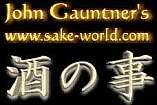 
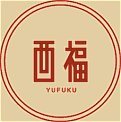 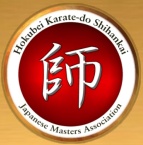
 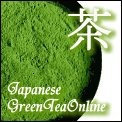 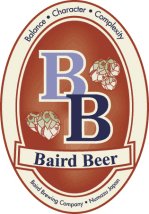

ABOUT SITE AUTHOR
- Name: Mark Schumacher
- Born 1959 (USA)
- B.A. Chinese Studies 1982 (Hamline University, Minnesota)
- M.A. Japanese Studies 1990 (Johns Hopkins, SAIS, Wash. DC)
- Resident of Japan since 1992
- Please click here for my resume
ABOUT MY SOURCES
- Please see Bibliography (this page) for main sources
- Few primary resources (i.e., Sanskrit, Pali, or Chinese documents) were used to construct these pages. Most information herein comes from temple visits, temple brochures, various dictionaries and guidebooks, museum publications (especially from Kyoto and Nara), and hundreds of web resources. I rely mainly on English and Japanese resources, but try to include Sanskrit, Chinese, and other spellings whenever possible for deity names, sutra titles, et. al. Credits for outside resources are listed above or below the text/image. Credits may also be viewed by holding the mouse momentarily over any specific image. About 50% of the photos at this site are from outside sources, the rest are by me.
- I am by no means “fluent” in Japanese and Chinese, and must struggle often with obscure terms and historical references. But when comparing several translations of the same passage or name, I sometimes modify the passage/name to suit my own interpretation. Most of the translations at this site are not mine, however, and such translations are always identified in the credit.
TECHNICAL MATTERS
- Romanization.
In most cases, this site uses the Hepburn system of romanization. Nonetheless, there is no fully satisfactory way of romanizing Japanese (or, for that matter, Chinese, Tibetan, Korean, or Sanskrit). To provide as much precision as possible, the Japanese ideograms (kanji) are also presented, showing both the standard Japanese spelling and its hiragana equivalent.
- Japanese Names.
Family names are shown before first names. The Japanese do not have middle names.
- Era Names and Dates.
Standard classification and dating scheme found in both Japan and the West.
- Deity Classification.
Follows the same scheme as that of the Japanese and their Buddhist scholars.
REASONS FOR MAKING THIS PHOTO DICTIONARY
My reasons for creating this photo dictionary are quite simple. First and foremost, this project is a labor of love. Second, it is a tribute to Kamakura, my home since 1993, and home to dozens of temples from the Kamakura Era (1185-1333), which still house and display wondrous life-size wooden statues from the 8th century onward. Third, this project was prompted by a dissatisfaction with existing literature on Japanese Buddhist art -- especially sculpture. I still visit book stores and libraries hunting for “the perfect” English handbook on Japanese Buddhist sculpture. But I must admit, I have yet to find anything that satisfies me. Mountains of publications are out there, but in my mind they suffer from too much preaching, promoting, inconsistency, inaccuracy, and just plain “unreadability.” There are some excellent resources (see our BOOKS pages), but yet I’m unsatisfied.
Fourth, and most regrettably, the online sites of the great repositories of Japanese Buddhist sculpture -- the national museums in Tokyo, Kyoto, and Nara -- don’t offer any systematic A-to-Z access to their impressive art collections. There is no comprehensive online catalog. Even so, the situation is much improved compared to only ten years ago, thanks largely to advances in web technology. And to be fair, this is not just a problem with museums in Japan. At the online sites of major museums in America and Europe, it is likewise difficult to find what you want, even when you know the piece is in their collection.
So, armed with my first digital camera (back in 1995), I decided to create my own handbook on Japanese Buddhism (with the help of my scanner as well). This ongoing project is the result.
Alas -- I’ve bitten off more than I can chew. The more I study the details of Japanese Buddhism, the more it eludes me by revealing still more details to study. As I try to understand and categorize, the topic keeps expanding. Maybe one day I’ll finally have the “perfect” handbook, but for that to happen, I’ll need to keep digging deeper into the vast terrain of Buddhist art, faith, mythology, and superstition. Perhaps my goal shall always elude me. Perhaps I shall never have my “perfect” handbook. But along the way, l hope we can both -- you the reader and me the digger -- find joy and insight.

Buddhist-Artwork.com (our sister estore selling Buddhist statuary)
is a member of the above Web Ring. The Ring lists various online merchants.
Most sell goods from Tibet and India, while Buddhist-Artwork
features Buddha statues from Japan.

Buddhist-Artwork.com
Sister Site of the A-to-Z Photo Dictionary (this site)
Online Sales of Hand-carved Wood Buddha Statues
|